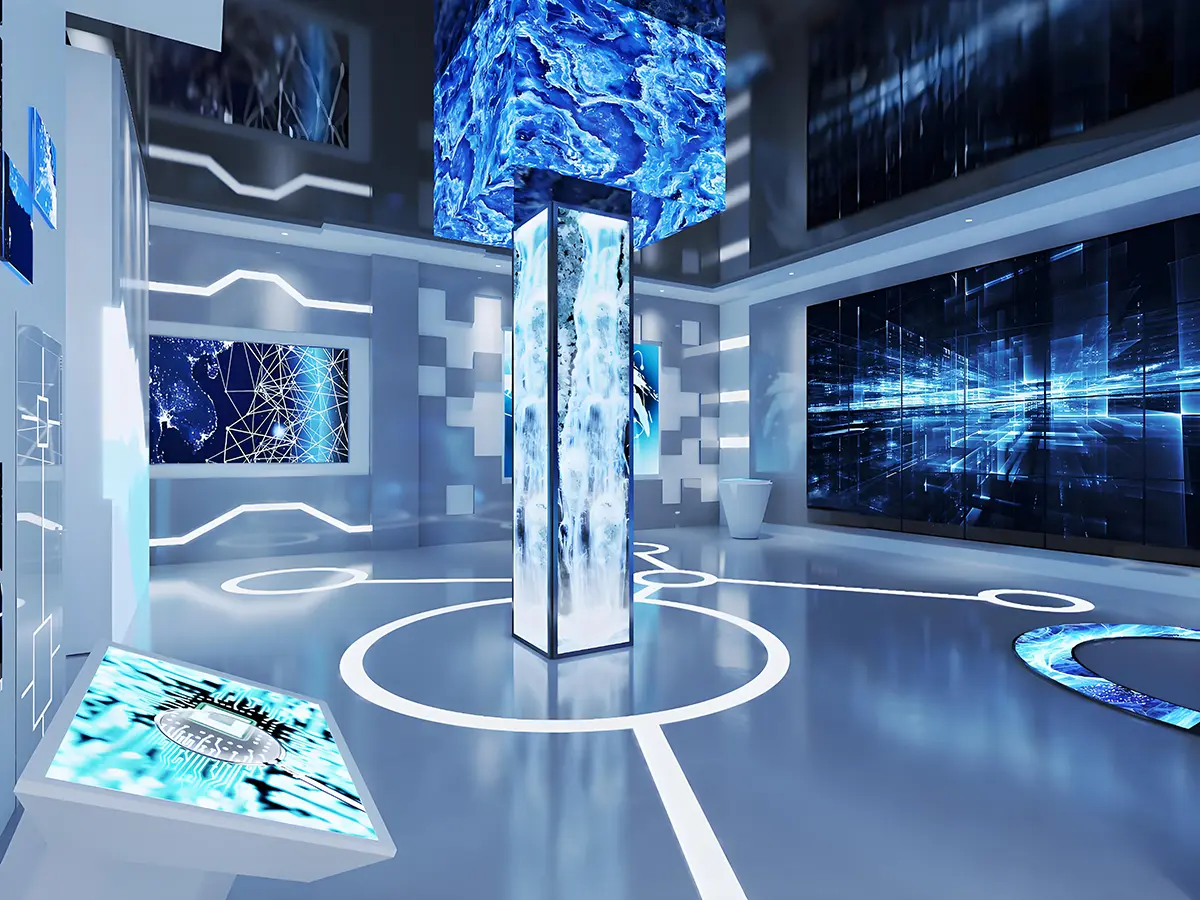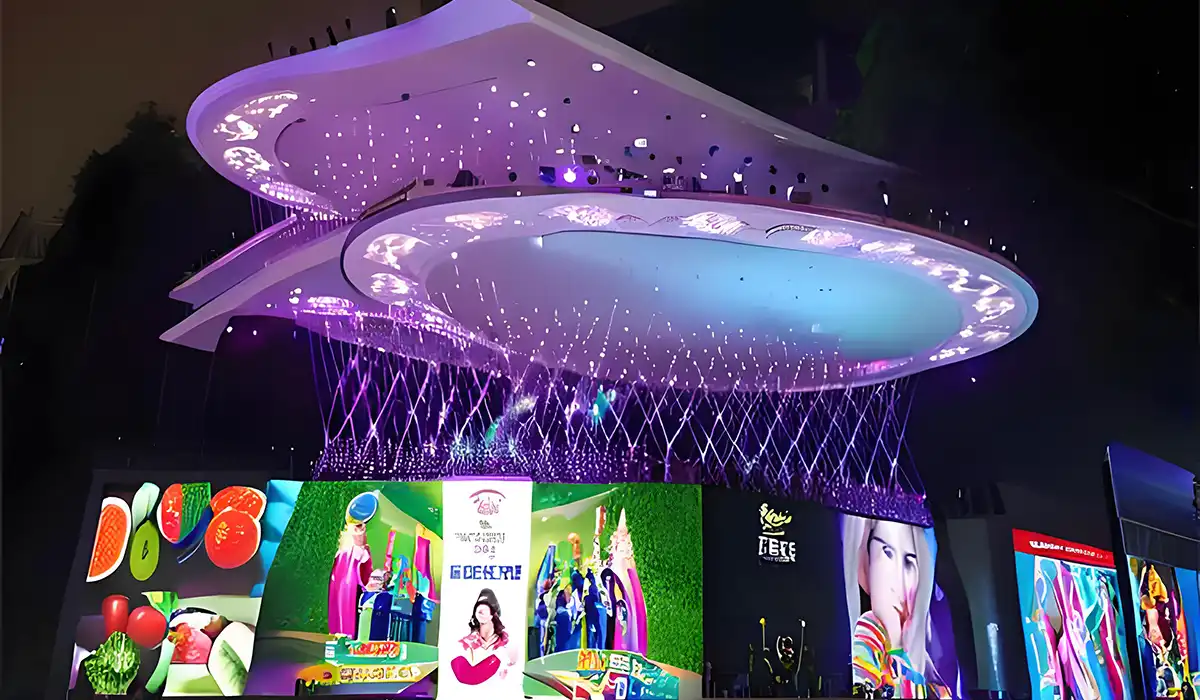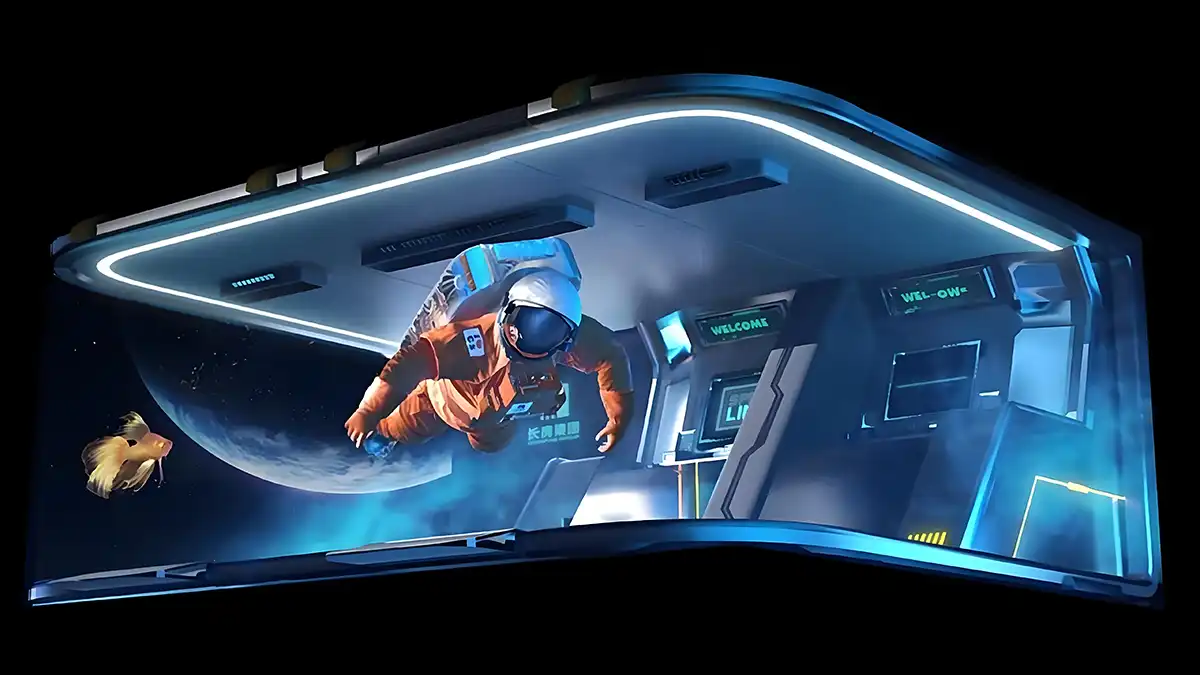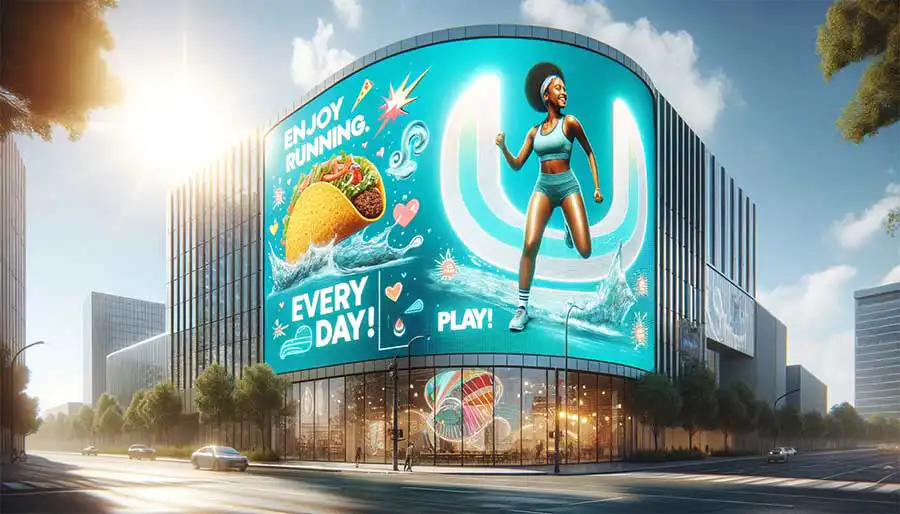Holographic displays are among the most futuristic technologies currently available in the visual display market. They create stunning floating 3D images in mid-air, providing a captivating viewing experience. These systems are designed to project images that appear to float or hover in space, making them ideal for applications where visual impact and novelty are essential.

Holographic displays utilize advanced optical technologies to create three-dimensional visual effects without the need for special glasses. The most common types include:
Pepper's Ghost Technique: Uses angled glass or transparent screens to create the illusion of floating images.
Laser Plasma Displays: Project images into the air using focused lasers to create points of light.
Multi-Layered Projection Systems: Layer multiple transparent screens to produce depth effects.
These technologies can simulate highly realistic floating visuals, ideal for creating memorable impressions in various settings.

Highly Eye-Catching: Creates an immediate "wow" factor, perfect for luxury marketing and exhibitions.
Futuristic Appeal: Strong visual attraction due to cutting-edge technology.
High Cost: Systems can range from tens of thousands to several hundred thousand dollars.
Limited Brightness: Performance may diminish under bright lighting conditions.
Restricted Viewing Angles: Optimal viewing is often limited to specific positions.
Complex Maintenance: Requires specialized equipment and professional upkeep.
Luxury Retail Displays: Showcase high-end products with stunning visual effects.
Exhibition Booths: Draw crowds at trade shows and expos.
Entertainment Venues: Create unique visual experiences at concerts and live performances.
Museums and Art Installations: Enhance educational and artistic exhibits.
To help businesses make an informed decision, it is essential to compare holographic displays and 3D LED video walls side by side.
| Feature | Holographic Display | 3D LED Video Wall |
|---|---|---|
| Visual Effect | Floating, mid-air imagery | 3D stereoscopic or depth-based content |
| Cost | High to very high | Moderate and scalable |
| Brightness | Moderate, limited by ambient light | Very high, suitable for all lighting conditions |
| Viewing Angles | Narrower, optimized from certain positions | Wide, viewable from multiple directions |
| Maintenance | Requires specialized care | Standardized and easy to maintain |
| Installation Complexity | Complex, often requires professional setup | Simple, modular installation process |
| Applications | Luxury retail, exhibitions, entertainment | Retail, commercial venues, large public spaces |
While holographic displays excel in creating a futuristic atmosphere, their cost and technical complexity make them less accessible for everyday commercial use. In contrast, 3D LED video walls offer a practical, high-impact solution that balances visual effect, scalability, and operational simplicity.

3D LED video walls provide businesses with a market-ready option for captivating displays. They are designed to function effectively in a wide range of environments while offering ease of use and long-term reliability.
Key reasons why businesses prefer 3D LED video walls include:
Lower initial and operating costs.
Superior brightness and clarity, even in challenging lighting conditions.
Flexible configurations for various spaces and installation types.
Easy maintenance with readily available components.
Support for dynamic, customizable 3D content.
These advantages make 3D LED video walls a favored solution for businesses aiming to enhance visual engagement without the complexities associated with holographic technology.

While holographic displays are visually striking, they may not always be practical for everyday commercial use. A highly effective and more versatile alternative is the 3D LED Video Wall.
Cost-Effective: Lower investment compared to holographic setups.
High Brightness: Excellent visibility even in brightly lit environments.
Wide Viewing Angles: Viewable from multiple positions.
Modular Design: Easy to scale and install.
Durability: Long-lasting with minimal maintenance.
Holographic displays project floating, mid-air 3D images using optical or laser techniques, often with limited brightness and viewing angles. 3D LED video walls use LED panels to create stereoscopic or depth-enhanced visuals that are brighter, scalable, and suitable for various environments.
Generally, holographic displays perform best indoors or in controlled lighting because their brightness and visibility can be greatly affected by ambient light.
They require specialized maintenance and calibration due to the complexity of their optical systems, which often means higher upkeep costs.
While they don’t create floating mid-air images, 3D LED video walls offer practical, high-impact 3D visual effects that work well for most commercial and public display needs.
Hot Recommendations
Hot Products
Get a Free Quote Instantly!
Talk to Our Sales Team Now.
If you are interested in our products, please contact us promptly
Reach out to our sales team to explore customized solutions that perfectly meet your business needs and address any questions you may have.
Email Address:info@reissopto.comFactory Address:Building 6, Huike Flat Panel Display Industrial Park, No. 1, Gongye 2nd Road, Shiyan Shilong Community, Bao'an District, Shenzhen city , China
whatsapp:+8615217757270